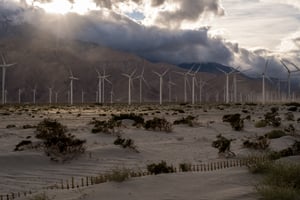The shift towards renewable energy is crucial for sustainability but introduces complex challenges...
Navigating the Winds of Change: The Evolving Landscape of Renewable Energy Technologies
The journey towards a sustainable future is increasingly powered by renewable energy. With the goals of international climate agreements such as COP28 in view, the role of technological innovation in solar and wind energy has never been more pivotal. This blog explores the latest advancements in these fields and their impact on the global energy landscape.
Solar Power Innovations
The solar energy sector has seen significant advancements in panel efficiency. As of my last update in early 2023, the National Renewable Energy Laboratory (NREL) reported record efficiencies in laboratory settings, with some solar cells surpassing 24% efficiency. This is a noteworthy improvement from the average efficiencies of 15-18% observed in commercial panels a few years prior.
Another innovative trend is the development of floating solar farms. Countries like Japan and Singapore have actively explored this technology to overcome land constraints, showcasing its potential for efficient energy generation.
Wind Energy Developments
In wind energy, the trend towards more giant turbines is evident. According to the Global Wind Energy Council (GWEC), newer offshore wind turbines have reached capacities of up to 14 MW – a substantial increase from the 3-5 MW capacity of turbines a decade ago. This scale-up in turbine size enhances efficiency and power output, making wind energy more competitive.
The concept of floating wind farms, like Scotland's Hywind project, represents a significant technological leap. These installations can be deployed in deeper waters, harnessing stronger, more consistent winds and expanding the potential for offshore wind energy.
Integration of AI and Machine Learning
The application of Artificial Intelligence (AI) and Machine Learning (ML) is revolutionizing the management and optimization of renewable energy systems. AI and ML algorithms can accurately forecast the output of renewable energy generators, such as wind and solar farms. This predictive ability is essential in addressing the inherent variability of renewable energy sources. By accurately forecasting energy production, operators can enhance the efficiency and reliability of these systems, potentially increasing the overall value and effectiveness of renewable energy. This integration of AI and ML represents a significant advancement in making renewable energy more viable and sustainable for future energy needs.
Energy Storage and Battery Technology
Energy storage is vital for mitigating the intermittent nature of renewables. BloombergNEF's projections, as of my last update, suggest a significant expansion in the global energy storage market, potentially reaching hundreds of gigawatts by 2040. Innovations like solid-state and flow batteries are expected to play a key role in this growth, offering higher energy densities and longer lifespans.
Challenges and the Path Forward
Despite these advancements, challenges persist. Supply chain constraints, high investment costs, and regulatory frameworks are significant hurdles. Addressing these challenges requires collaborative efforts from governments, industry, and academia.
Investment in research and development, supportive policies, and workforce training are essential to harness these technological innovations fully.
The landscape of renewable energy technologies is rapidly evolving. Solar and wind energy advancements, along with AI, ML, and energy storage innovations, are making renewables more efficient, viable, and reliable. Embracing these technologies is crucial for a sustainable energy future and achieving global climate goals.


